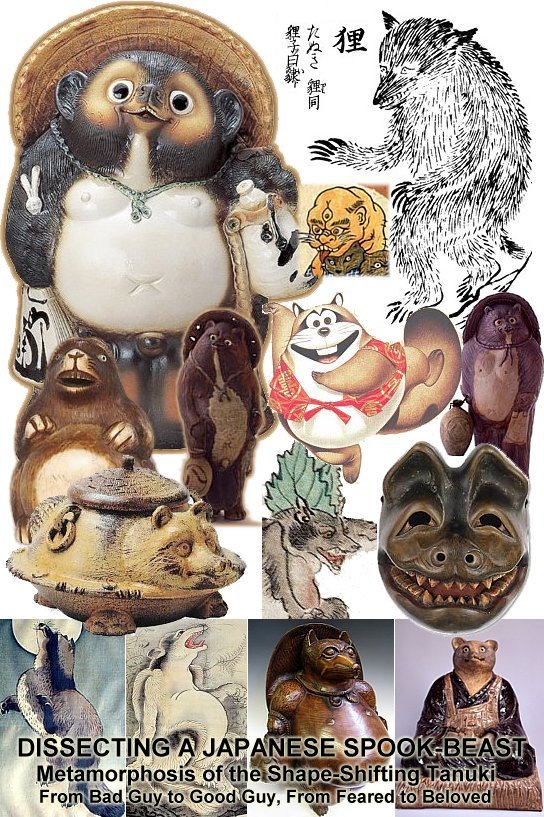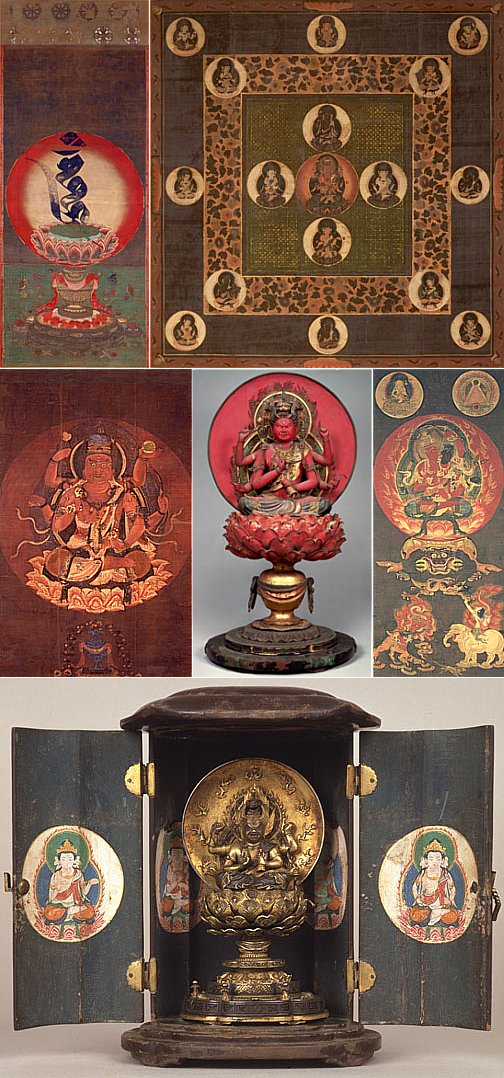Buddha Statues & Japan – Oct. 2011
Thursday, October 13th, 2011Hello Readers. This month’s updates include some exciting stories and exhibits.
Shape-Shifting Tanuki in Japanese Artwork
http://www.onmarkproductions.com/html/tanuki.shtml
Grab you favorite beverage, sit back, and join me on a riotous visual romp featuring over 150 photos (from the 17th century onward) of the magical shape-shifting Tanuki. This 34-page article explores the metamorphosis of the spook-beast Tanuki from bad guy to good guy, from feared to beloved. It also debunks widespread misinformation about Tanuki, his sake flask, promissory note, and giant scrotum. It is intended as a “primer” for students & teachers of art history and folklore. The only thing missing is popcorn.
Current Exhibitions & In The News
» Aizen Myō-ō Exhibition, October 15 through December 4, 2011
Aizen Exhibition, Kanagawa Bunko. At the Kanagawa Prefectural Kanazawa Bunko Museum 神奈川県立金沢文庫 in Yokohama. If you live in Japan, don’t miss this exhibition, which features Aizen Myō-ō 愛染明王. Aizen is the King of Sexual Passion, one who converts earthly desires (love/lust) into spiritual awakening and saves people from the pain that comes with love. Today, Aizen is also revered in Japan’s gay quarters as the patron of love. Aizen is closely connected with the magical wish-granting jewel (Jp. = Hōjyu 宝珠; Sanskrit = cintamani), as are other Buddhist deities. Depending on the deity involved, the jewel can signify the bestowal of blessings on all who suffer, grant wishes, pacify desires, and bring clear understanding of the Dharma (Buddhist law). In Aizen’s case, worshippers often used the jewel to pray for success in their romantic relationships. One important ceremony was called the Jewel of Aizen Myō-ō Rite 如法愛染王法 (pronounced Nyohō Aizen ō hō). The rite was used in the 13th and 14th centuries by esoteric sects to pray for the love and respect of others. This Aizen rite is a variant of the main esoteric ceremony known as the Wish-Granting Jewel Rite 如意宝珠法 (pronounced Nyoi Hōju Hō). This rite began sometime in the late Heian period, spearheaded by the Daigo-ji Temple (Shingon sect) in Kyoto.
» Kasuga Landscapes & Images of a Sacred Sanctuary, Oct 8 – Nov. 6, 2011
Nezu Museum in Tokyo is holding an incredible exhibition of artwork from Kasuga Shrine (Nara) with approximately 35 paintings, mandalas, and decorative art works. See Nezu Museum’s English page for details.
» Sculptures of the Imperial Household, Until Nov. 20, 2011
Kiyomizu Sannenzaka Museum (Kyoto). Showcases around 60 pieces, including ivory and wooden sculptures, framed carvings and netsuke by Koun Takamura (1852-1934) and Komei Ishikawa (1852-1913), two master sculptors appointed as artists to the Imperial Household when the system started in 1890.
» True living temples: Explore beyond Kyoto’s museum-like big attractions
Special to The Daily Yomiuri Read the story here.
» Robert Yellin, Handling History in a Clay Vessel
Read the story here.
Please enjoy this month’s newsletter.
mark from kamakura







